#唐詩
Photo

江畔獨步尋花·其五 唐 杜甫 黃師塔前江水東,春光懶困倚微風。 桃花一簇開無主,可愛深紅愛淺紅? #南京 #nanjing #nanking #spring #春 #春天 #flowers #花 #賞花 #flowers #🌸 #孤芳倦客 #踏青 #桃花 #碧桃 #山桃 #chinesegarden #漢詩 #唐詩 #七言絕句 #杜甫 https://www.instagram.com/p/CqJ4xnoyB4p/?igshid=NGJjMDIxMWI=
5 notes
·
View notes
Text
ホンコン5割近く=電話で毎日詐欺受ける!西側メディア!なるほどね。でしょうね。これって、ほぼ半数か。
これも、あっちも状態か。何の疑問も?詐欺天国か?各種団体調べ。天天詐騙。騙人不停。停不住去。各人計算起来多少?韻をふんでみました( ( ´`))
1 note
·
View note
Note
Didn’t jttw’s publisher see the book’s success and wanted to replicate it with north, east, and south? I thought I read that somewhere but it’s been a while.
I can't say I know anything about that, or at least I haven't heard about it. If you find the link to where you read that I would love to see it! The story of Xiyouji was popular before Wu Cheng'en's version, hence why there were so many different versions around it, just that it was theorized that Wu Cheng'en was able to connect multiple of the one-off tales of them fighting demons and finally put it together in a coherent narrative. Wu Cheng'en's version started to become the 'canon' because of its popularity but that doesn't discredit the popularity or notoriety of previous Xiyouji media.
Xiyouji was based on The Story of How Tripitaka of the Great Tang Procures the Scriptures 大唐三藏取經詩話 which was released around the late-13th-century, giving a good few centuries for the story to rise in popularity before the Wu Chengen's 1592 cut. From there we do see other versions of the story, such as the early-Ming Journey to the West zaju play 西遊記雜劇 which was created between these productions.
If we want to see when the other novels were created it's just a matter of trying to put them in order.
Late-13th-century ~ The Story of How Tripitaka of the Great Tang Procures the Scriptures 大唐三藏取經詩話
Early-Ming ~ Journey to the West zaju play 西遊記雜劇
1522-1526 - Journey to the East 東遊記 by Wu Yuantai
1566 ~ Journey to the West: The Biography of Tang Sanzang 西游唐三藏出身传 by Yang Zhihe
1570s-1580s - Journey to the South 南遊記 by Yu Xiangdou
1592 - Journey to the West 西遊記 by Wu Cheng'en
1602 - Journey to the North 北遊記 by Yu Xiangdou
I think that considering how close the publication dates (even the estimates) that it would be fair that most of these pieces of media were either inspired by previous interpretations of Xiyouji and it took some time before Wu Cheng'en's version finally became popular enough to be considered the 'canon' as it is referred to as today. I can't say how fast the spread of literature was back in the 16th century but I assume it would be much slower by today's standards at least.
#anon ask#anonymous#anon#jttw#journey to the west#xiyouji#ask#sun wukong#The Story of How Tripitaka of the Great Tang Procures the Scriptures#大唐三藏取經詩話#Journey to the West zaju play#西遊記雜劇#Journey to the East#東遊記#Journey to the West: The Biography of Tang Sanzang#西游唐三藏出身传#Journey to the South#南遊記#Journey to the West#西遊記#Journey to the North#北遊記#the - are for times I could get ~ is for estimations#some of these I can't fin authors sadly#But yeah xiyouji is super popular but Wu Cheng'en didn't do it first#He just made it better#bailong#xiao bailong#bailong ma
21 notes
·
View notes
Photo




"You? You were my girlfriend previously, now you're my wife"- Chingwan
#the righteous fist#ruco chan#natalie tong#ruco x natalie#鐵拳英雄#唐詩詠#29#Hong Kong#hkdrama#dramagifs#tvb#gifs#littlecloverstar#lyricalstars
2 notes
·
View notes
Text
0 notes
Text
唐末五代詩人王貞白《白鹿洞》
讀書不覺已春深,
一寸光陰一寸金。
不是道人來引笑,
周情孔思正追尋。

唐末五代詩人王貞白《白鹿洞》
讀書不覺已春深,
一寸光陰一寸金。
不是道人來引笑,
周情孔思正追尋。
1 note
·
View note
Text
#ロマ佐賀#ロマンシングサガ#マンホール#佐賀市#唐津市#唐津くんち#SAGAアリーナ#ロックブーケ#アルベルト#かみ#ジェラール#せんせい#ファイアブリンガー#詩人#クローディア#ビューネイ#イスカンダール
0 notes
Photo

/ 昨日、今日はバタバタと… 本当、頭がパンクしそうです。 その前に身体がアウトになるかも。 まあ、そんな事は気にせずやれる事からやって行きましょう! 本日、今期、初スイカを頂きました。 世代なので志村けんみたいな事したいけど、 貧民な我が家は一滴の水分をこぼす事なく、 かぶりついて、啜りました。 ———————- #スイカ #西瓜 #志村けん #初物 #夏の風物詩 #大栄スイカ #LAWSON ———————- #骨董品 #茶道具 #唐物 #急須 #民藝 #絣 #キャンプギア #アウトドア #昭和レトロ #大正ロマン #明治モダン #アンティーク #生前整理 #遺品整理 #空き家整理 #古物買取り #不用品買取り #草刈り #不用品処分 #みのり屋 #町の便利屋 #古道具 #minoriya_art ——————— https://www.instagram.com/p/Cf39zT6vDAF/?igshid=NGJjMDIxMWI=
#スイカ#西瓜#志村けん#初物#夏の風物詩#大栄スイカ#lawson#骨董品#茶道具#唐物#急須#民藝#絣#キャンプギア#アウトドア#昭和レトロ#大正ロマン#明治モダン#アンティーク#生前整理#遺品整理#空き家整理#古物買取り#不用品買取り#草刈り#不用品処分#みのり屋#町の便利屋#古道具#minoriya_art
0 notes
Text
何故、中共は「中国4000年の歴史」とか「中華民族」とか見えすいた嘘を吐くのか?侵略の準備なんだよ!
本当は夏朝、殷、隋、唐、金、遼、元、清など全て騎馬民族など異民族支配で元々の漢民族は殆ど後漢で滅んでる
その王朝でも支配してたのは北京周辺であり今のチベット、内モンゴル、ウイグルなどの地域も異民族に支配されており、北京周辺王朝は貢いでたり、王族などから女を贈って、勘弁して貰ってた
女を贈って置いて「あの地方王朝の王は俺たちの婿様だから、あそこも中華王朝の一部」とか無理な事を言ってる
しかし中共はその論理でチベットを盗り、内モンゴルを裏切り、東トルキスタン(ウイグル)を強奪して、中共から人を沢山送り現地人をレイプ強姦して妊娠させ混血児を増やし、現地人には強制堕胎、強制不妊手術を行い純粋な現地人人口を減らし、言葉を奪い、文化や宗教を禁止して文字通り民族浄化して、根絶やしにしようとしている
「元々は中華の一部」「太古より中華民族(なんだソレ?)が住んでた」と言い張り、侵略している
同じ論理をプーチンがウクライナに言って「元々はロシアの一部」「昔からウクライナにもロシア人が住んでた」と言い張り、ロシア系住民保護と主張して、ウクライナに侵攻した
おんなじパターン
中共は「尖閣は中共の土地」「沖縄は中国(どの支那だよ?)に朝貢してた中国の一部」と主張している
北海道には沢山、移民させてる
次はどうなるかって?
そりゃ中共による尖閣、沖縄、北海道の侵略が始まるんだよ!
だから「中国4000年の歴史」とか「ずっと中国はあった」とか「偉大な中華民族(何ソレ?)」という嘘に加担しては駄目だ!
それは彼らの宣伝
それは彼らのプロパガンダ
なんだよ?
欧米なんか知ってか知らずか
鵜呑みにしてる
日本国民は洗脳されて
鵜呑みにしてる
まずそこを否定して
防衛強化して
教育を強化して行こう!
【関連】
828 :本当にあった怖い名無し :sage :2010/09/27(月) 12:12:24 ID:fsTA3r1B0(4)
支那人にも孔子、老子、孟子を生んだ立派な文明があると誤解している日本人が多いのだと思います。
漢文を通じて中国人を理解することぐらい、絶望的な行為はありません。何故なら漢文はこの二千年間というもの中国語とは全く関係がない。日本人のほとんどは漢文を中国語の古語と思ってきたのです。
つまり日本人が尊敬し 知っている漢民族は紀元二世紀でこの地球上から姿を消し、中国住民はそっくり北方の騎馬民族の子孫に何回も何回も入れ替わってしまったのです。
そして秦や漢時代の中国人は,そのほとんどが大陸から居なくなったということです。
ところが日本は遣隋使や遣唐使たちの使節が派遣され膨大な漢籍を大陸から持ち帰り,それを今日まで途切れることなく勉強してきたのです。
つまり日本人は騎馬民族の子孫である中国でなく2000年以上前のいなく なった漢民族の文化を勉強してきたのです。
日本人なら誰でも知っている儒教の開祖である孔子は,紀元前6~5世紀 中国各地の有力諸侯が覇権を争っていた春秋時代のことです
830 :本当にあった怖い名無し :sage :2010/09/27(月) 12:13:38 ID:fsTA3r1B0(4)
使節団が中国から持ち帰った無数の漢籍を日本人は今日まで約1300年間も読み込んできたのです。
早い話が遣隋使や遣唐使が持ち帰った「論語」や「漢詩」などによって 皮肉なことに中国人でなく日本人の人格が磨かれてきたのです。
中国語と漢文は全く関係がない、つまり漢文の読めない中国人にとって孔子や孟子の教えなど身につくはずもありません。
いわゆるこの二千年間というもの,漢文は中国語とは全く関係がないと いうことを多くの日本人は知らなかったのです。
私はこれらのことを中国史研究の第一人者である岡田英弘先生から教えてもらいました。
私も20年前 漢文を通じて身につけた中国イメージのまま中国に進出してそのギャップの大きさに仰天した記憶があります。
中国進出する前は、信義に厚く,礼を尊ぶ文化人の国であると信じていました。しかし現実にいるのは,油断も隙もならない、詐欺師の野蛮人ばかりでした。
中国人に取って漢文とは外国語同然なのです.中国で話されている言葉とは全く無縁の言語体系なのです。
831 :本当にあった怖い名無し :sage :2010/09/27(月) 12:14:22 ID:fsTA3r1B0(4)
現在の中国人は,彼らが使っている中国語が,実は文体もボキャブラリーも日本語からの借用であるということを隠そうとしています.現代日本文の真似をして前置詞や助動詞を明確に記すことによって、やっ��文章が書けるようになったのです。
日清戦争後,日本に大量の清国留学生がやってきて,日本語を学び中国語を誰でもが読める中国語の表記法を改良していったのです.その中にかの有名な魯迅もいたのです。
日本語をマスターした魯迅の頭の中は日本語の文章があり,それを漢字に置き換えて表現することによって原文一致体の「白話文」が生まれました。
そして試行錯誤の結果 現在における中国語は北京語を元にした「普通話」がやっと確立されたのです。
つねに色んな異民族に取って変わられた中国の歴史を眺めたとき,中国政府が宣伝している四千年の歴史は中国人の歴史ではなく中国大陸の歴史だということがわかります。
中国には単一民族としての中国人は一度も存在しなかった.中国語には
北京語,上海語,福建語などの言葉があることを知られていますが、実際はもっと言語は細分化されています。これらは単なる方言というのでなく,ほとんど共通点がありません。
そこで中国政府は各国が持っている「国民国家」というシステムを作るために国民を北京語に統一して教育してきたのです。それもまだ100年足らずのことです。
833 :本当にあった怖い名無し :sage :2010/09/27(月) 12:16:10 ID:fsTA3r1B0(4)
そして言語だけでなく異文化、異言語の人々の寄せ集め集団である中国を統一するために歴史も歪曲せざるをえなかった。
毛沢東は少数民族を含めて全ての中国人を漢族にしてしまうために少数民族の文化を奪い、抵抗するものは容赦なく抹殺してきたのです。
もし少数民族の自治や、言論の自由といったものを実現させれば、中国政府が意図する最強の「国民国家」システムの改造計画が頓挫してしまいます。
この中国共産党の意図が理解できたとき、日本人やアメリカ人が思っている「中国は資本主義開放経済への道を進めば自然に民主国家になっていく」という考えが いかに愚かな事であるかということがわかっていただけたとおもいます。
http://2nnlove.blog114.fc2.com/blog-entry-2836.html
404 notes
·
View notes
Photo

Illustrated “Anthology of Tang-Dynasty Poems” in Five-Syllable Lines (Tōshisen ehon gogon ritsu hairitsu) 画本唐詩選五言律排律. 1836 (Tenpō 7). Credit line: Purchase, Mary and James G. Wallach Foundation Gift, 2013 https://www.metmuseum.org/art/collection/search/78802
#aesthetic#art#abstract art#art museum#art history#The Metropolitan Museum of Art#museum#museum photography#museum aesthetic#dark academia
14 notes
·
View notes
Photo
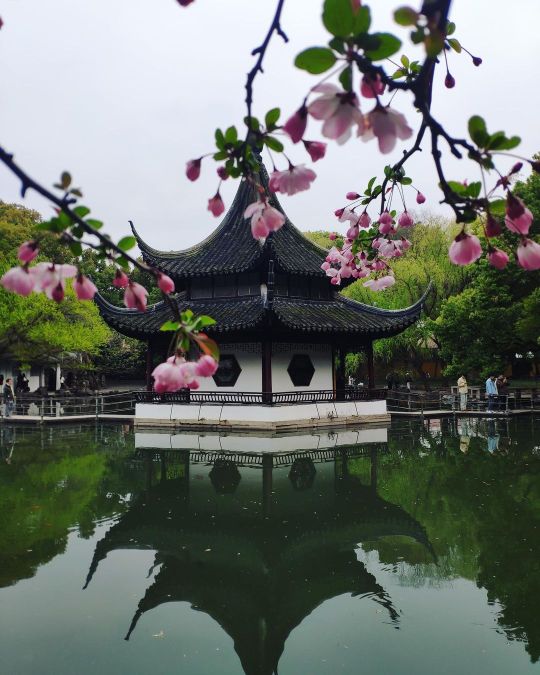
題崔端公園林 唐 李端 上士愛清輝,開門向翠微。 抱琴看鶴去,枕石待雲歸。 野坐苔生席,高眠竹挂衣。 舊山東望遠,惆悵暮花飛。 #蘇州 #苏州 #suzhou #史跡 #古蹟 #世界遺產 #蘇州園林 #chinesegarden #chinesearchitecture #chinesetemple #🙏 #清代建築 #spring #春遊 #西園寺 #漢詩 #唐詩 #五言律詩 #李端 #flowers #花 #賞花 #垂絲海棠 #🌸 #古木 #太湖石 #假山 (在 蘇州西園寺) https://www.instagram.com/p/CqC24fry1Y0/?igshid=NGJjMDIxMWI=
#蘇州#苏州#suzhou#史跡#古蹟#世界遺產#蘇州園林#chinesegarden#chinesearchitecture#chinesetemple#🙏#清代建築#spring#春遊#西園寺#漢詩#唐詩#五言律詩#李端#flowers#花#賞花#垂絲海棠#🌸#古木#太湖石#假山
3 notes
·
View notes
Photo

Legends and myths about trees
Trees in Buddhism (1)
Fig trees (Ficus) - Trees that bear fruit without flowering
“Enter the fig forest and seek the flowers, but get none. In the world of the three realms (Trailokya: Ref), you seek the unwavering and you do not get one. The practitioner who knows this, forsakes this and that together...like a snake shedding its old skin.” - Buddha
Above is an extract from a verse of the Buddha in the Sutta Nipata No.5.
A common feature of the fig genus (ficus) is the peculiar inflorescence. They appears as if it suddenly bears fruit without flowering. They are hermaphrodites or dioecious, collectively known as fig trees or figs. These belonging to the family Moraceae have about 850 species and are native throughout the tropics, with a few species also found in semi-temperate zones.
Hermaphrodites are generally those that have male and female reproductive organs in one individual. Those that do not are referred to as gonochoric. In the case of plants, they are referred to as monoicous and dioicous, respectively.
The fig fruit develops as a hollow, fleshy structure called the syconium that is lined internally with numerous unisexual flowers. The tiny flowers bloom inside this cup-like structure. The small fig flowers and later small single-seeded (true) fruits line its interior surface. At maturity, these 'seeds' (actually single-seeded fruits) line the inside of each fig.
The fruit of most species are also edible though they are usually of only local economic importance or eaten as bushfood. However, they are extremely important food resources for wildlife. Figs are also of considerable cultural importance throughout the tropics, both as objects of worship and for their many practical uses.
The Bodhi tree is well known for Siddhartha Gautama (Ref2) sat under the tree, meditated and finally attained enlightenment becoming the Buddha, also known as "sacred fig tree", belongs to this fig family.

木にまつわる伝説・神話
仏教の樹木 (1)
イチジク(無花果) 〜花を咲かせずに実のなる木
“無花果の林の中に入りて、花を求めて得ることなし。三界世間(参照)の中にありて揺るがざるものを求めて得られず。かく知っている修行者は、これをもあれをも、ともに捨てる。蛇が旧き皮を脱ぎ捨てるがごとく。“ーブッダ
上記は、経集 (スッタニ・パータ 5) にあるブッタの詩篇の抜粋である。
イチジク属に共通する特徴は、花序が特殊であることだ。イチジクが無花果と言われるように、この仲間は、花が咲かずに唐突に果実を生じるように見える。雌雄同体あるいは雌雄異株で、高木になるものから低木、またはつる性の木本になる種もある。モクセイ科に属するこの植物は、約850種あり、熱帯地方全域に自生し、数種は半温帯にも分布している。
雌雄同体 (しゆうどうたい) とは、一般に、雄の生殖器官と雌の生殖器官を一個体に持っているものを言う。そうでないものは雌雄異体 (しゆういたい) という。植物の場合にはそれぞれ、雌雄同株 (しゆうどうしゅ)、雌雄異株 (しゆういしゅ) という。
イチジクの果実は、中が空洞で肉厚の「サイコウニアム (隠頭花序)」と呼ばれる構造で、その内部には多数の雌雄同体の花が並んでいる。小さな花は、このカップ状の構造物の中で咲く。その内面には、小さなイチジクの花と、後に小さな一粒の種の真果が並ぶ。成熟すると、この「種子」(実際は1粒の果実) がイチジクの内側に並ぶ。
果実はほとんどの種で食用になるが、通常は地域経済的に重要であるか、山菜・野生の果物として食されるに過ぎない。しかし、野生動物にとっては非常に重要な食糧資源である。イチジクは、熱帯地方において、崇拝の対象として、また多くの実用的な用途として、文化的に非常に重要なものである。
菩提樹は、ゴータマ・シッダールタ(参照2)がこの木の下に座って瞑想し、ついに悟りを開いてブッダとなったことで知られ、「聖なるいちじくの木」とも呼ばれる、イチジク属の植物である。
#trees#trees in buddhism#buddha#bodhi tree#fig#fig trees#the sacred fig#tree legend#tree myth#ficus#trailokya#hermaphrodite#nature#art
106 notes
·
View notes
Text
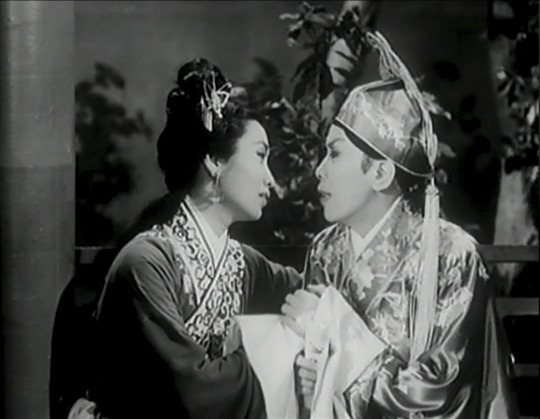
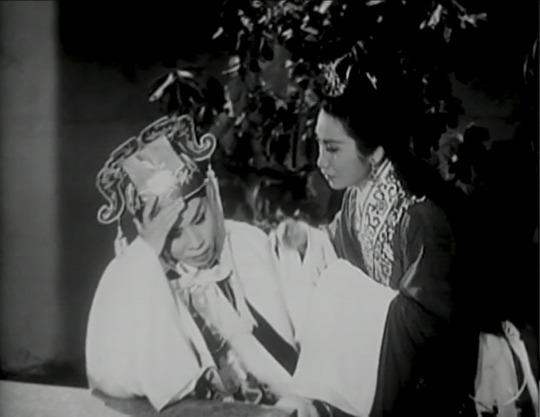

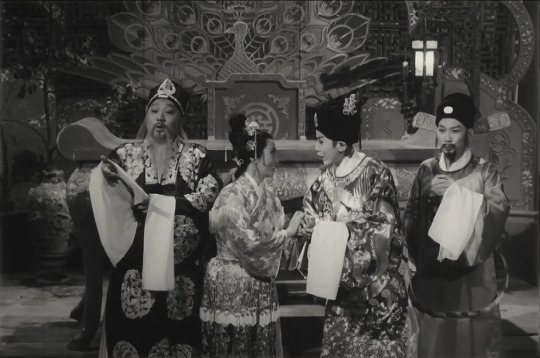
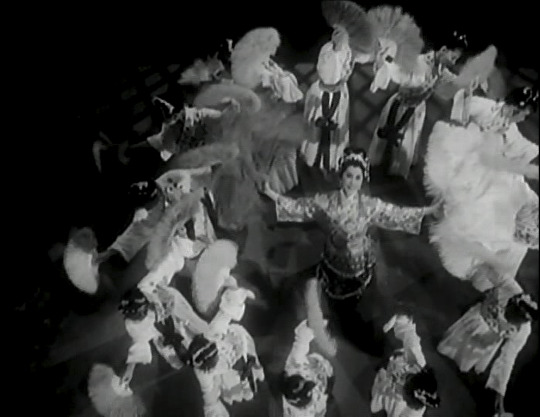
Screening Announcement! (Dec 10th & 17th, 2023)
Update as of 6 Dec 2023: There are still decent seats left for the 6pm & 9pm showings on Dec 10th, and for all four screenings on Dec 17th!
If anyone here will be in Hong Kong this December 10th or 17th (both Sundays), and has even a passing interest in Yam Kim Fai and Pak Suet Sin (see my post on them here), queerness in East Asia and/or the 1950’s, or Chinese opera, I strongly urge you to go to one of the eight screenings of the restored version of Butterfly and Red Pear Blossom (蝶影紅梨記)!
Not only is it a great romantic comedy (yes, really), it’s also a very rare opportunity to see a classic Cantonese opera movie – or indeed any black and white Hong Kong movie – with English subtitles and in 4K resolution. For a taster, check out this excellent dance scene (not 4K) and this video from the Hong Kong Film Archive about their restoration efforts!
On top of that, it’ll be showing in the cinema of the storied Sunbeam Theatre (新光戲院), which opened in 1972 and is Hong Kong’s last commercial Cantonese opera theatre. (It must be added that being able to go there will soon become an even rarer opportunity; the venue will sadly be closing in 2025 as heritage is apparently a joke in Hong Kong.)
Here's a quick outline of the story for those who need a bit more convincing:
Penned by the Shakespeare of Cantonese opera, Tong Tik Sang (唐滌生), this retelling of Yuan-dynasty opera Tale of Red Pear Flower (謝金蓮詩酒紅梨花) starts off fairly sober - courtesan So-chau (Pak Suet Sin) and scholar Chiu Yu-chau (Yam Kim Fai) are long-distance lovers, but before they are able to meet in person for the first time, So-chau is forced to fake her death to avoid being sent off to a barbarian warlord. But then it morphs into an unexpected romantic comedy: in her escape, So-chau ends up at a relative’s house… only to find that Chiu will be moving in as a guest there that very night. Unfortunately for her, she’s been forbidden by her uncle from disclosing her identity for fear of disrupting Chiu’s studies, and Chiu is extraordinarily – albeit adorably – dumb.
Apart from the two leads being played by women, it’s really easy to read queer themes into how So-chau is desperate with longing and yet unable to directly articulate her desires and identity, permitted only to hint and nudge. (As is the movie as a whole in some ways, since Hong Kong movies of that era were very prudish; even heterosexual kisses weren’t allowed onscreen.) Chiu, kind-hearted but oblivious, echoes the familiar figure of the queer crush. Also, Pak plays So-chau with the thirstiness of a marathon runner who hasn’t had a drop of water since the start of the race, so there’s that to enjoy too :)
Tickets are available on the Cityline website for HK$70 each (linked here – change the language to English by clicking “Eng” in the menu); note that you’ll need to make an account to make a purchase. Dec 10th and Dec 17th will both have four screenings each (12pm, 3pm, 6pm, and 9pm), but seating is very limited so you should definitely buy your ticket sooner rather than later!
#wlw recommendations#asian lgbtq#hong kong#cantonese opera#chinese opera#yam kim fai#pak suet sin#hong kong queer icons#yampak#yambak#pak sheut sin#bak sheut sin#theatre
24 notes
·
View notes
Note
has anyone ever tried to adapt the early play version of the journey? or took some inspiration? like monkey's siblings
I'm trying to only read a couple of these movie/show summaries a day in order to not get burned out but I'll be honest... I don't think a single one of them has any of their own JTTW-inspired media ;_;
On one hand, I understand. Other adaptions of Journey to the West like The Story of How Tripitaka of the Great Tang Procures the Scriptures 大唐三藏取經詩話 or Zaju 西遊記 are interesting stories on their own they never gained that popularity or notoriety that Wu Cheng'en's 西遊記 adaption. And honestly, it makes sense in that Wu Cheng'en is the most popular as it was able to take the best qualities of Wukong, keeping him a mischievous but clever monkey while still making him wise and a respected fighter. It gave Wukong layers to be able to relate to any reader, being of higher class or of lower class, gaining such attention in both entertainment and scholarly work that it gained the 'canon' status.
So sadly any background of Wukong's four siblings was dropped and has yet to ever resurface.
Some more info on those if you want to look into them more.
The same being said with Supplement Journey to the West 西遊補, Journey to the South 南遊記, and Later Journey to the West 後西遊記. Once Wu Cheng'en's 西遊記 gained that popularity and status other authors wished to contribute as well. And while I am sad that there is no media of these early contributions to the novel I also understand that they are pieces of media on their own.
The 'sequels' are stories onto themselves that offer their own allegories whether that be political or religious takes by the individual author more so using the medium of JTTW so convey their stories. Similar to how artists/writers use JTTW as a medium to tell their own stories in reimagings or adaptions.
Wukong or anyone of the pilgrimage going through other adventures within the novel or having continuations after the novel is nothing new to media in modern times as there are a lot of moves/shows with original demons or making stories of what happened 'after' JTTW so I would take it like... why would a director take someone's else blueprints for a reimaging/retelling of JTTW when they have their own version of the popular story? Why take someone else demon when you can make your own? Why remake someone else's take on Sun Clan children when you have plans of your own?
Sadly that means unless some of these earlier JTTW media become REALLY popular really soon and someone is willing to put their entire goal into making them entertaining or watchable enough for the general population I think they shall only stay where they are... they are good stories but I do think what's holding them back is that on their own, they are just okay and what really made them survive is their connection to the popular adaption of Journey to the West.
#jttw#The Story of How Tripitaka of the Great Tang Procures the Scriptures#大唐三藏取經詩話#Wu Cheng'en#Zaju 西遊記#xiyouji#西遊記#西遊補#Supplement Journey to the West#南遊記#Journey to the South#Later Journey to the West#後西遊#ask
10 notes
·
View notes
Text
貫通唐詩的魅力:香港的社會特色
唐詩在香港的名聲一直是一種迷人的社會特色,不斷地牽動著香港人的心靈。 儘管這件古老風格的藝術作品是中國唐代傳統(618-907推廣)的古老可愛實踐,但它追踪了重要的力量領域,以在香港充滿活力的城市景觀中產生迴響。 本文探討了唐詩在香港人中普遍受到尊重和欣賞的因素。
可驗證的根源和社會特徵:
香港與中國文化的可證實的聯繫,包括其抽象遺產,為唐詩在當地的聲名狼藉奠定了基礎。 唐朝政府是中國歷史上的一個重要時期,以其成功、富有想像力的成就和社會繁榮而聞名。 由於香港悠久的中華遺產,對唐詩的熱情成為了這座城市的社會特徵,鼓勵人們對過去產生深刻的滿足和進步。
強調舊式培訓:
香港的教育體系極其重視中國古體寫作。 從一開始,學生們就將唐詩作為他們教育計劃的一個特色。 這種開放性培養了對傳統工藝的欣賞,但廣告

0 notes